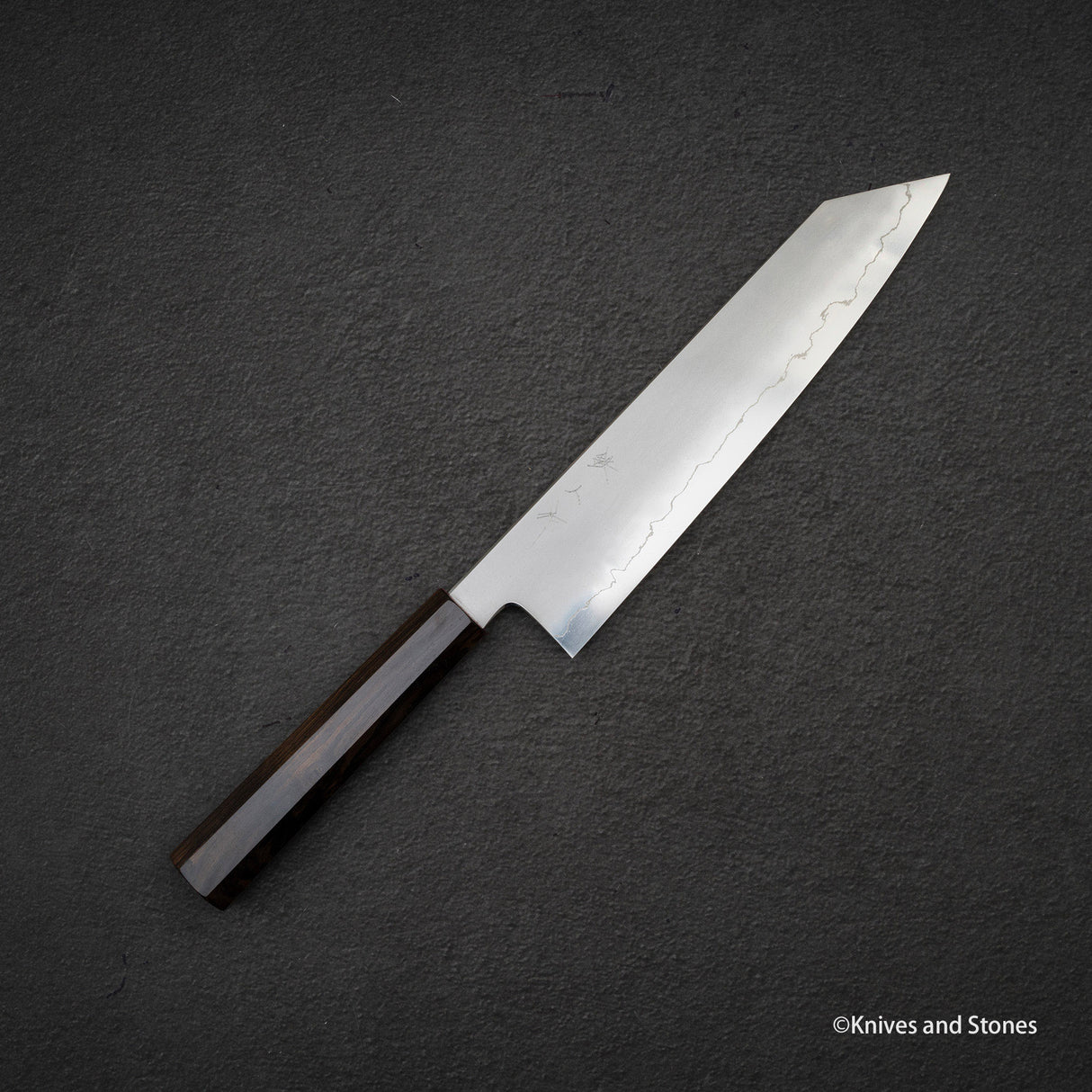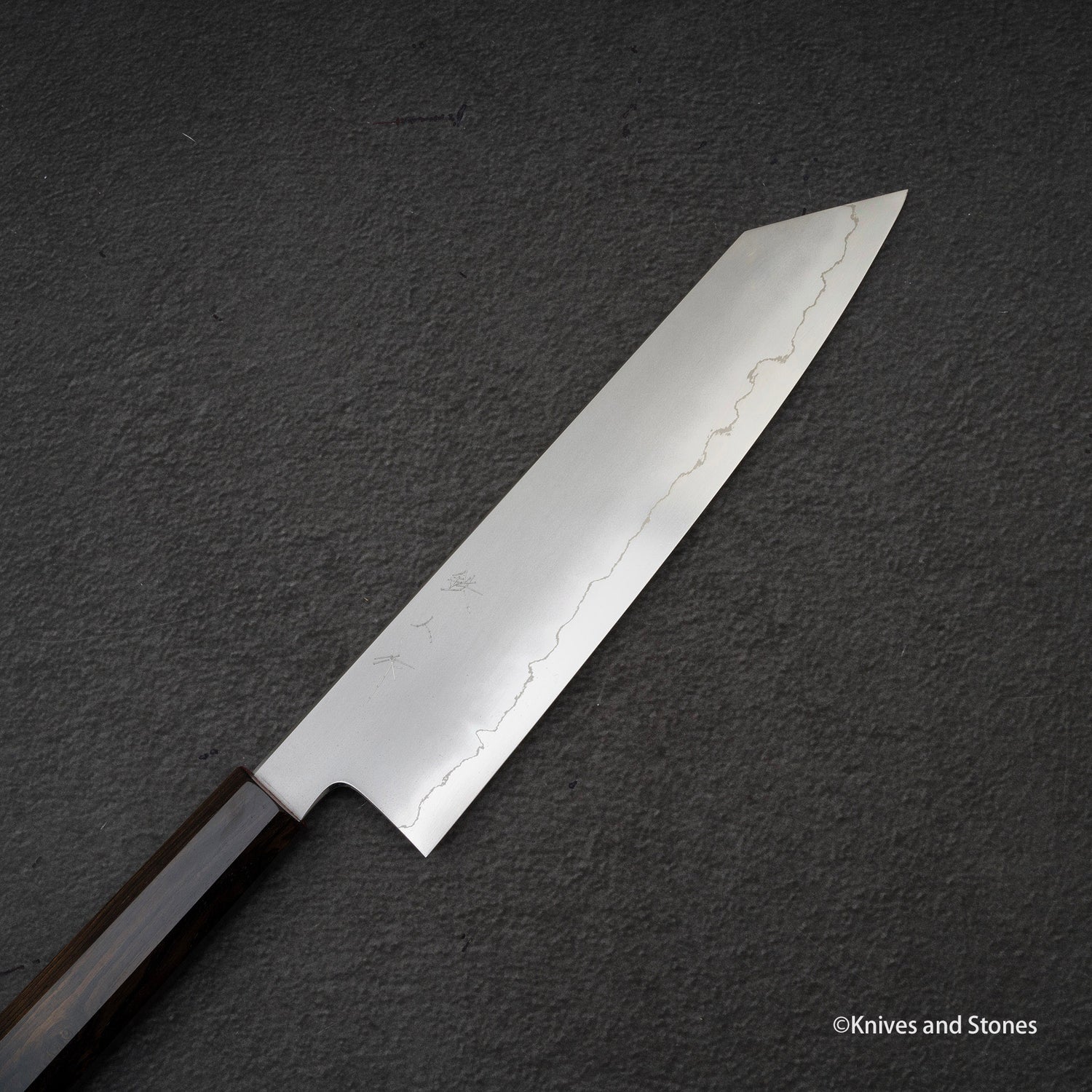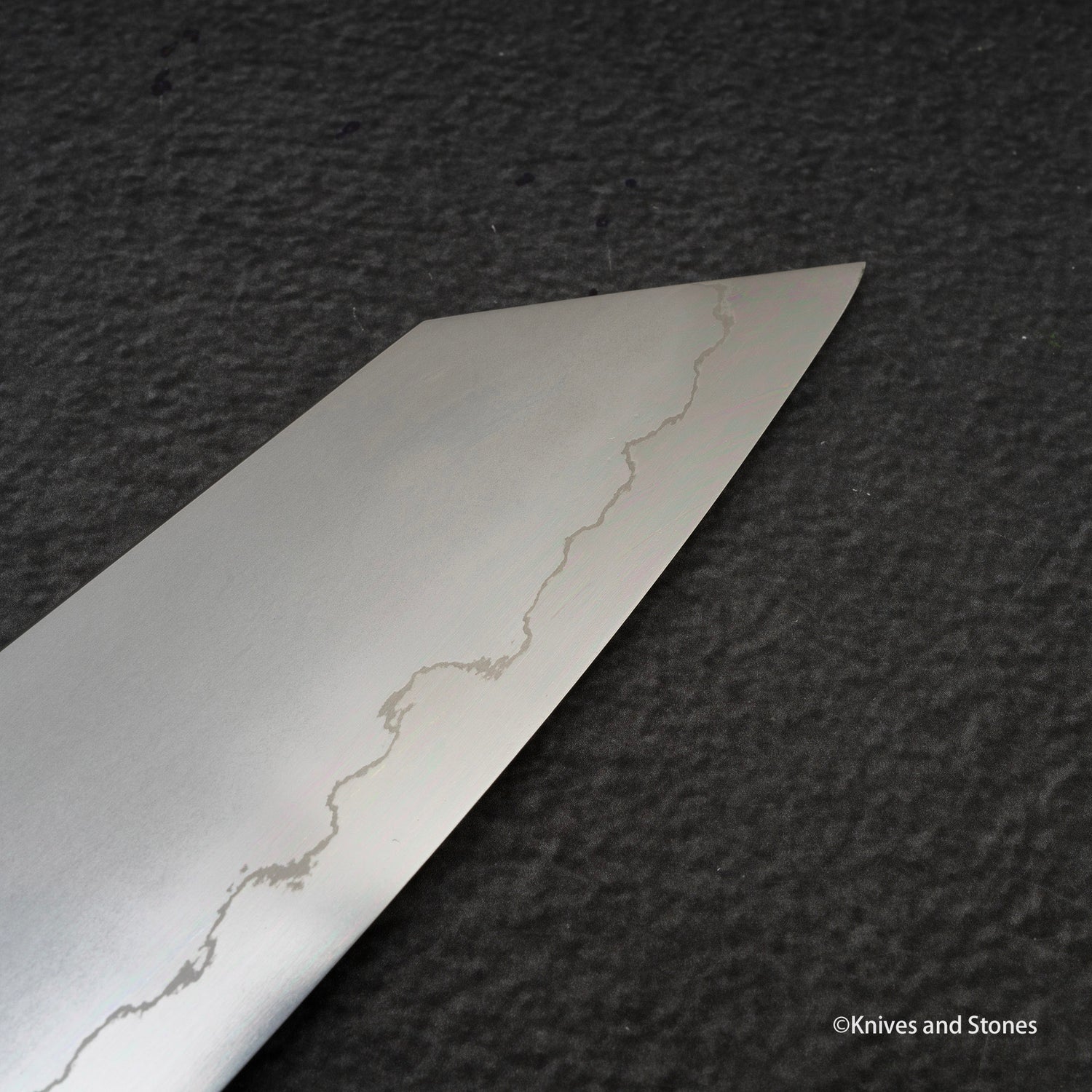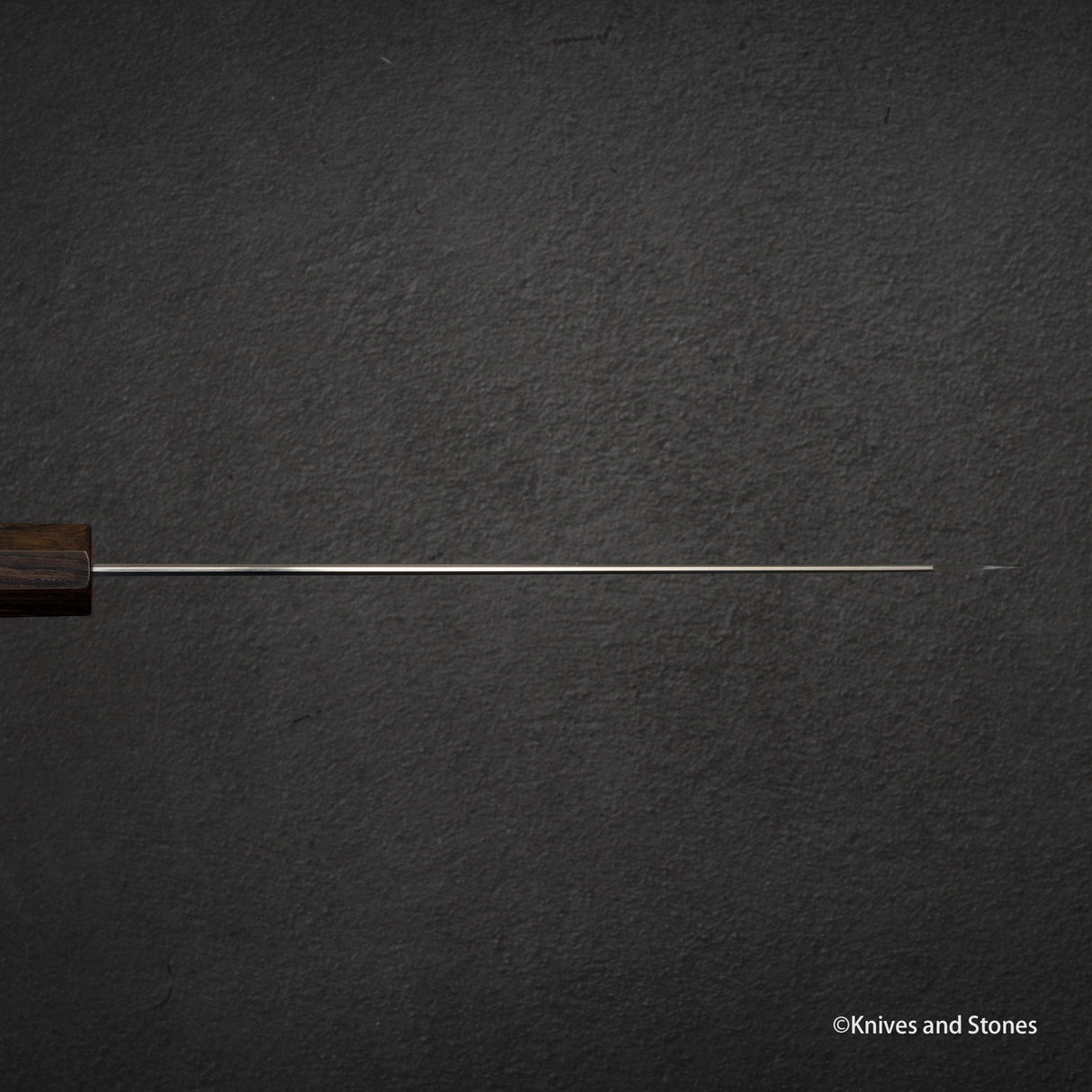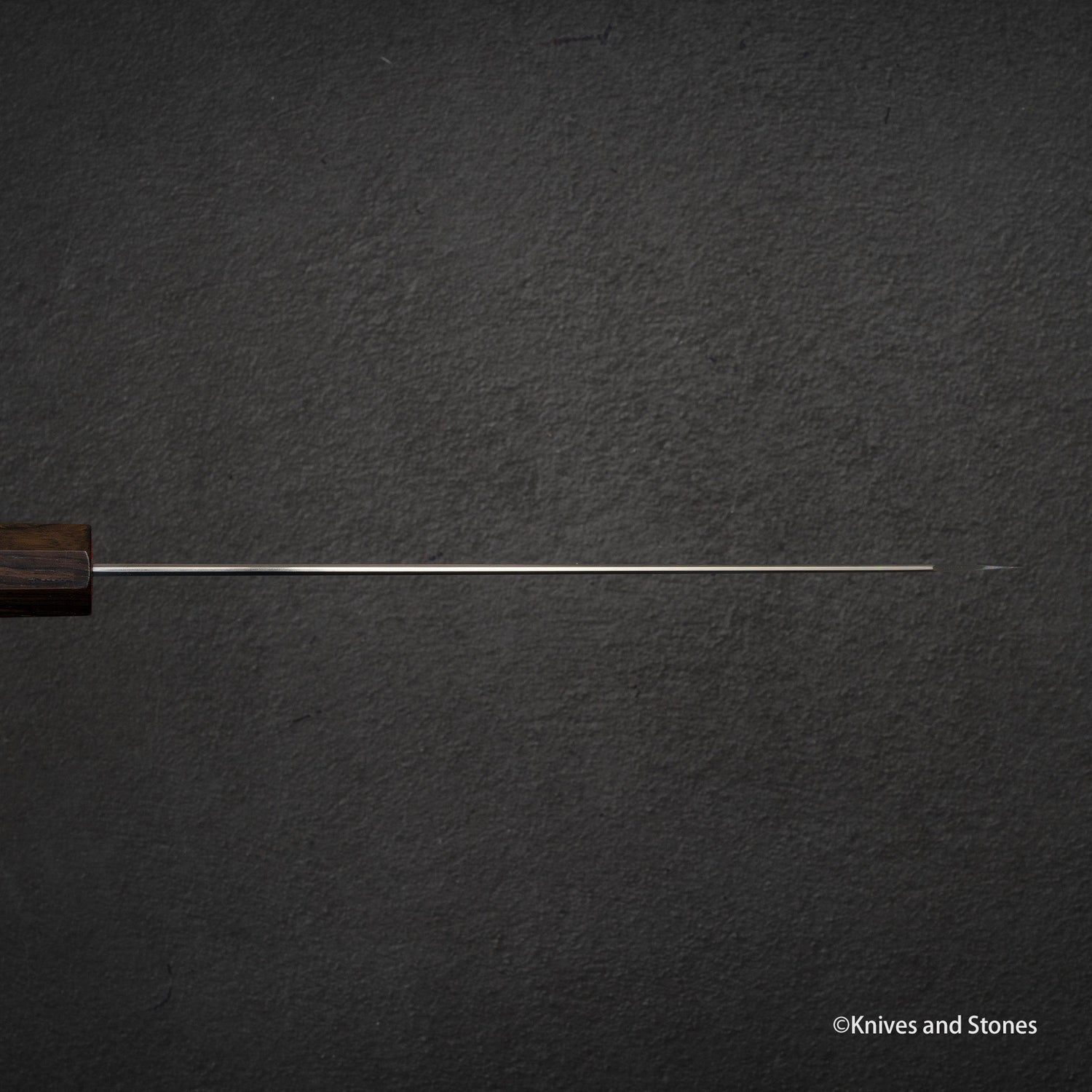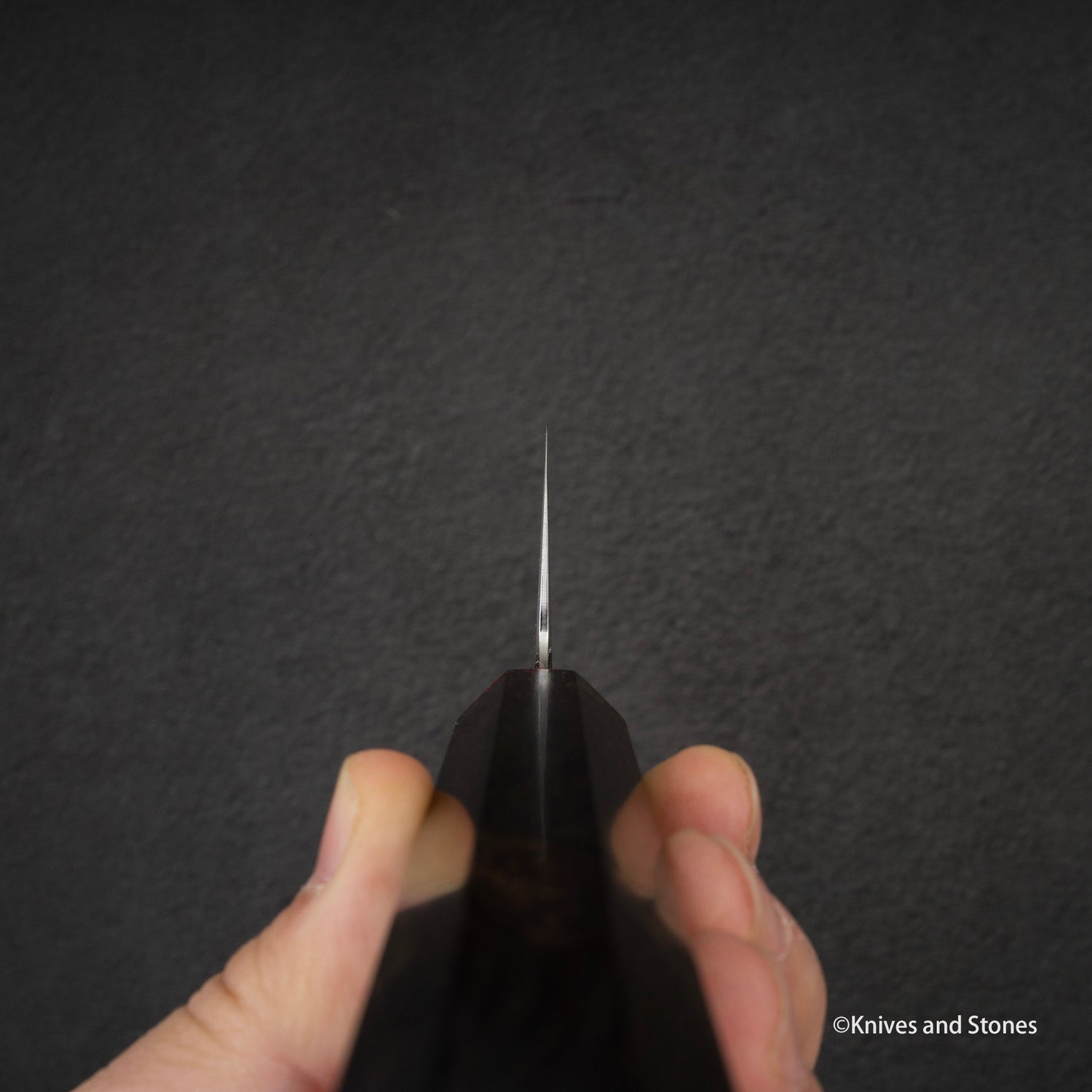Tetsujin Ginsan Kasumi K-tip Gyuto 240mm Ebony Handle
Tetsujin Ginsan Kasumi K-tip Gyuto 240mm Ebony Handle is backordered and will ship as soon as it is back in stock.
Couldn't load pickup availability
K&S Price: AU $569.95* inc. tax , vs:
| Pro Tooling | AU $688.0 | -20.91% |
* For overseas buyers you pay no GST (10%) and low shipping rate.
Last Update: 2024-05-15T01:01:50Z
Detailed Specifications
| Line | Tetsujin Ginsan Kasumi |
| Profile | Gyuto / Chefs Knife |
| Bevel Type | Double Bevel |
| Weight | 217 g 7.65 oz |
| Edge Length | 232 mm .9.13 inch |
| Heel Height | 50 mm .1.97 inch |
| Width @ Spine | 2.7 mm 0.11 inch |
| Width @ Mid | 2.7 mm 0.11 inch |
| Width @ 1cm from Tip | 0.6 mm 0.02 inch |
| Steel | Ginsan / Silver #3 | Stainless |
| Blade Construction | Sanmai - Stainless Clad |
| Hardness (HRC) | 60 - 62 |
| Surface Finish | Kasumi |
| Handle | Octagonal Ebony |
| Region | Tosa |
| Best for |
|

| Pros | Cons |
|
|
|
Care Instruction
- Don't cut hard things! Japanese knives are brittle so bone hacking is a NO NO!
- Wash with neutral detergent after use, and wipe dry;
- Please don't wash knife with dishwasher, it will damage the wood handle;
- Be careful not to leave the knife close to a heat source for a long time;
- It is a lot more dangerous to cut with a blunt knife than a sharp knife!
- It is best to sharpen a Japanese knife regularly on a waterstone.

